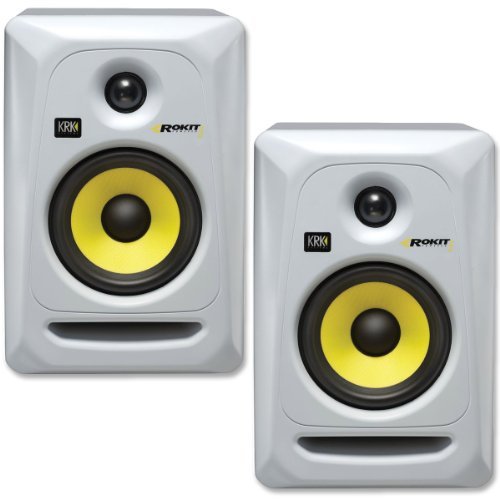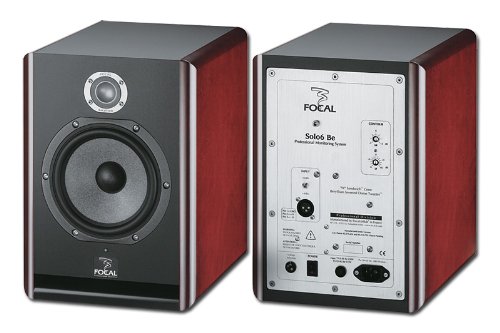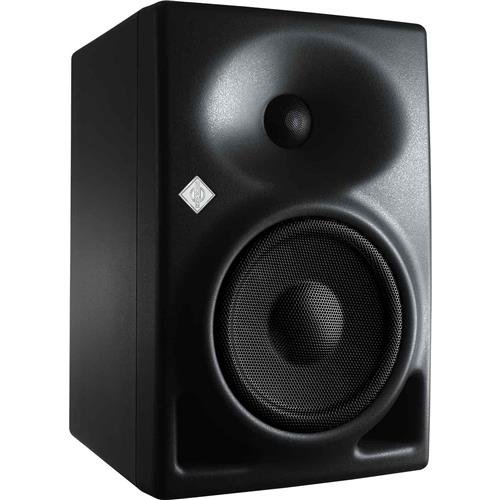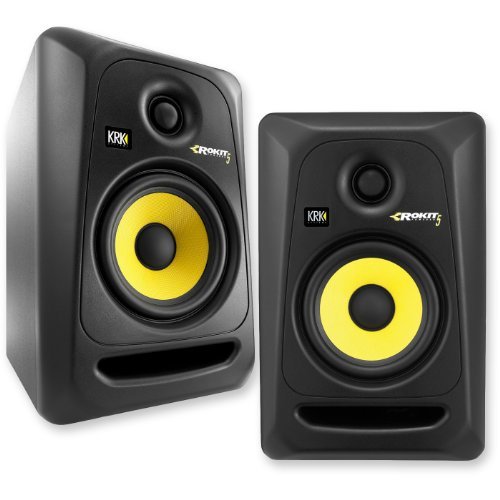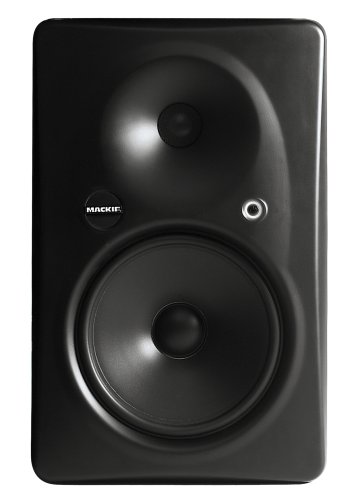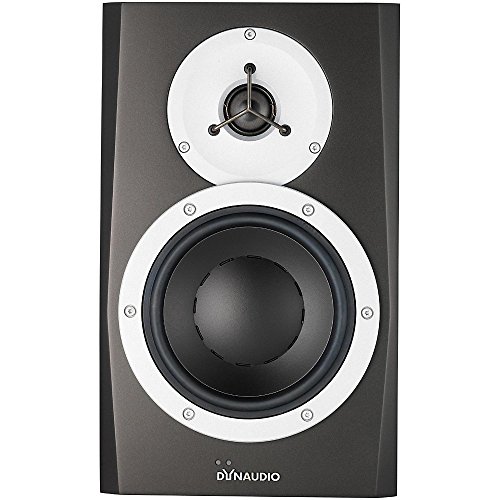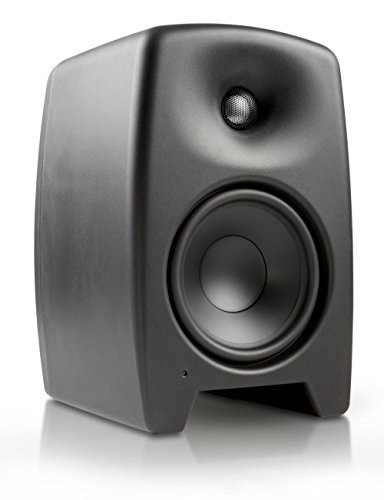Finding the best studio monitors can be a challenge. Which brand should you go for? Which type is best? What about size, weight, and material? Don't worry, we've simplified the studio monitor buying process for you below.
Table of Contents
- 10 Best Studio Monitor Speakers On The Market
- 1. Yamaha HS8 Studio Monitor
- 2. Neumann KH 120 A - Active Studio Monitor
- 3. JBL Professional 306P MkII 2-Way Powered Studio Monitors
- 4. KRK RP5G3W-NA Rokit 5 Generation 3 Powered Studio Monitor
- 5. Focal Solo6 Be 6.5" Powered Studio Monitor
- 6. Neumann KH 120 A - Active Studio Monitor
- 7. KRK RP5G3-NA Rokit 5 Genera
- 8. Mackie HR824mkii 8-inch2-Way Studio Monitor
- 9. Dynaudio Acoustics BM6 mkIII Studio Monitor
- 10. Genelec M040 Active 2-Way Monitor
- Studio Monitors Buyers' Guide
- FAQs
There are a number of studio monitors available on the market today and since you have so many options to choose from, take a minute to do your research to decide which one is best for your needs. We've compiled a list of the best studio monitors around.
At a glance: Our top 3 picks
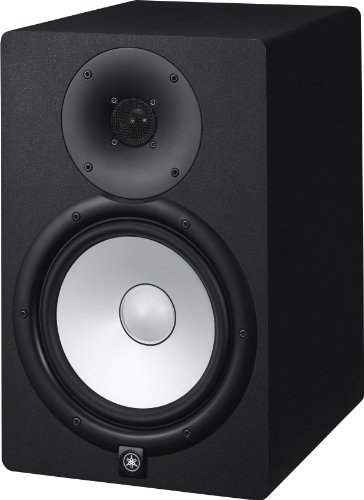
Yamaha HS8 Studio Monitor

- Has an 8 cone woofer and a 1 dome tweeter to provide you with the best quality sound.
- Has a frequency response of 38Hz to 30kHz, so you get the ideal flat frequency response.
- Equipped with a built-in amp and a bi-amp so you get the best sound resolution every time.

Neumann KH 120 A - Active Studio Monitor

- Has an 8 cone woofer and a 1 dome tweeter to provide you with the best quality sound.
- Has a frequency response of 38Hz to 30kHz, so you get the ideal flat frequency response.
- Equipped with a built-in amp and a bi-amp so you get the best sound resolution every time.
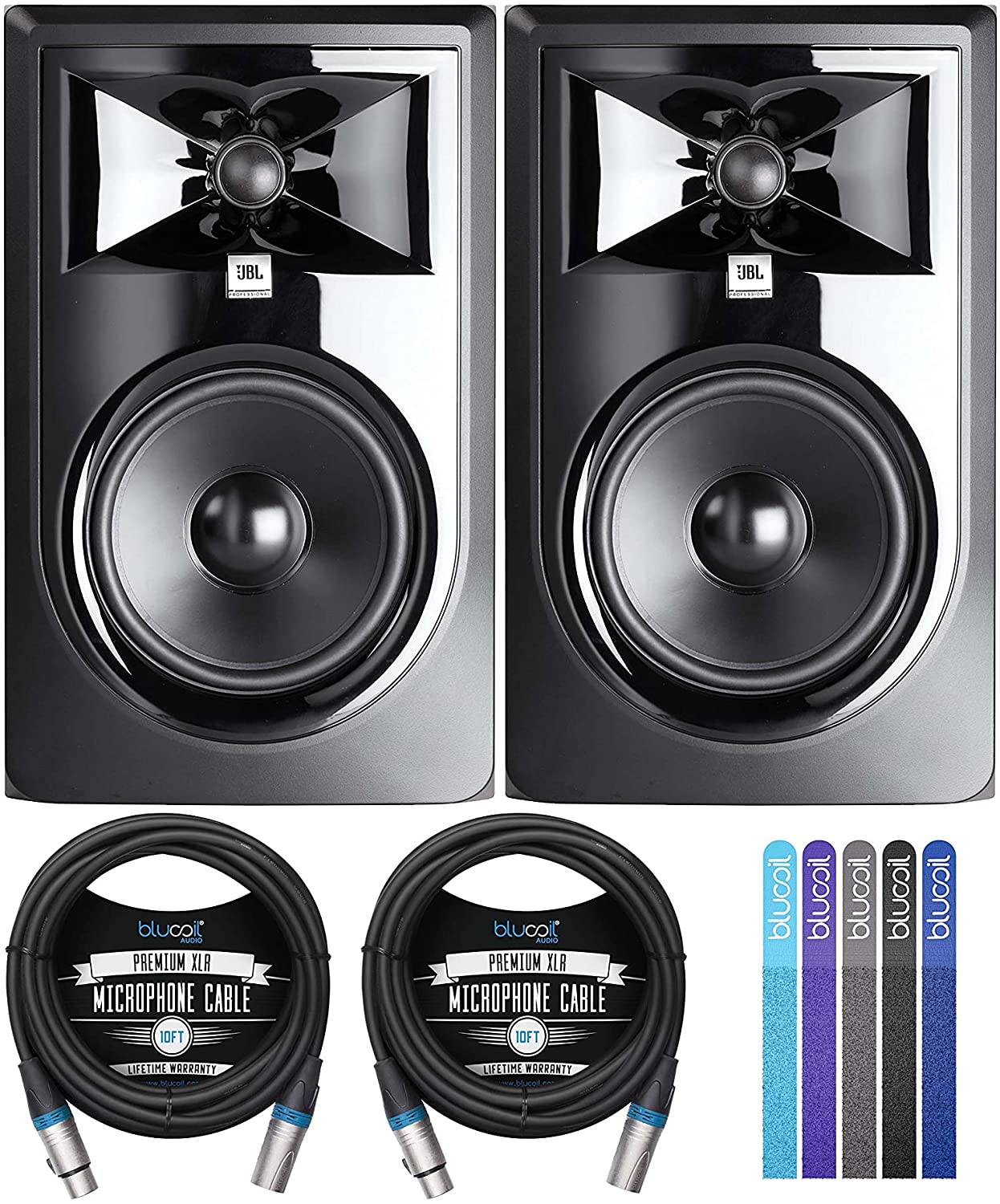
JBL Professional 306P MkII 2-Way Powered Studio Monitors

- Has an 8 cone woofer and a 1 dome tweeter to provide you with the best quality sound.
- Has a frequency response of 38Hz to 30kHz, so you get the ideal flat frequency response.
- Equipped with a built-in amp and a bi-amp so you get the best sound resolution every time.
10 Best Studio Monitor Speakers On The Market
1. Yamaha HS8 Studio Monitor
The Yamaha HS8 Studio Monitor is one of the very best studio monitors made by one of the best companies in the music gear business. Accuracy is the most important thing you want from a studio monitor and this beast by Yamaha is all about accuracy.
Pros:
+ Has an 8” cone woofer and a 1” dome tweeter to provide you with the best quality sound.
+ Has a frequency response of 38Hz to 30kHz, so you get the ideal flat frequency response.
+ Equipped with a built-in amp and a bi-amp so you get the best sound resolution every time.
Why We Liked It - Sound. Frequency response. The ability to reduce the unwanted noise. The Yamaha HS8 Studio Monitor has everything you could ever want in a studio monitor.
Critical listening - This one is more of a reminder than a tip. Studio monitors are designed for critical listening, which means they shouldn't artificially enhance the audio in any way. In other words, they don't sugarcoat certain frequencies like hi-fi speakers do to make it sound better. You hear an honest representation of your work; remember that hearing the bad areas is vital in mixing.

2. Neumann KH 120 A - Active Studio Monitor
The KH 120 is an excellent addition to music, broadcast, and post-production studios. Tack, mix, and master with this monitor. It’s perfect for use as a near-field or rear loudspeaker in multi-channel systems.
This compact monitor packs a punch. It features class-AB analog amplifiers to deliver amazing dynamic range and transient response. Get smooth off-axis response with the Mathematically Modeled Dispersion waveguide.
The interface is easy to use, featuring a range of signal sources. Tailor the output with treble, bass, and low-mid control to get the sound you want. Eliminate cabinet-induced coloration with the non-resonant Aluminum enclosure. This model has a frequency response of 52 Hertz -21 kiloHertz
Read Also: Top 11 Best Powered PA Speakers of 2023
Pros:
+ Class-AB analog amplifiers.
+ 52 Hertz -21 kiloHertz.
+ Easy interface.
Why We Liked It - We love how easy it is to tailor the output of this monitor. Adjust the bass, low-mid, and treble for any listening environment.
3. JBL Professional 306P MkII 2-Way Powered Studio Monitors
Make your studio come alive with these 2-way studio monitors and get the sound that’s perfect for you, whatever you’re working on. These speakers deliver beautifully detailed imagining and unbeatable bass performance. JNL’s patented Slip Stream Port ensures you get excellent low-frequency output, no matter the playback level.
These speakers tailor the sound to fit you and the room acoustics, giving a low-end boost with the Boundary EQ. Thanks to the HF trim, you can adjust the high-frequency response of these monitors, allowing you to get accurate and clear sounds in any space. In addition, the monitors feature dual-integrated Class D amplifiers, delivering a higher 110dB peak compared to other models.
These JBL speakers come with everything you need to get started
Pros:
+ Class D amplifiers.
+ Deliver detailed imaging and deep bass performance.
+ Tailor the speaker to you.
Why We Liked It - We absolutely love how detailed these speakers are. You can tailor the room to your acoustics, meaning deeper bass and a clear high-frequency to suit the room acoustics.
Good positioning - Studio monitors are directional, which means they don't throw the sound around the room like regular speakers. Form an equilateral triangle between the monitors and your head. The monitors should be the same distance from each other as they are from your head. The high-frequency drivers should be level with your ears.

4. KRK RP5G3W-NA Rokit 5 Generation 3 Powered Studio Monitor
The KRK RP5G3W-NA Rokit 5 Generation 3 Powered Studio Monitor is an ideal choice, whether you're an audiophile or a professional. It's suitable for all genres and it's accuracy and clarity of sound means you can trust this studio monitor to portray your music exactly as it sounds.
Pros:
+ It comes in a complete bundle with two of these amazing speakers.
+ Low distortion and large headroom thanks to the bi-amped, class A/B amplifier.
+ Also comes with a high-frequency adjustment so that you can mold it according to your personal taste and requirements.
Why We Liked It - The price to performance ratio that you get with these studio monitors is absolutely 100 percent.
5. Focal Solo6 Be 6.5" Powered Studio Monitor
The Focal Twin6 Be also known as Focal Twin6 Be 6.5" 3-way Powered Studio Monitor is one of the very best studio monitors of all time. Whether you are an audiophile or a professional this studio monitor has got all the solutions for you as far as mixing, recording or mastering is concerned. It's one of the most popular studio monitors in both Europe and the US.
Pros:
+ W composite sandwich cone gives you unparalleled frequency response.
+ Has an inverted-dome tweeter to provide you with the utmost of precision and high efficiency.
+ It also comes equipped with a potentiometer so that you can easily adjust the tweeter and woofer levels according to your liking.
Why We Liked It - There is a reason why the Focal Twin6 Be 6.5" 3-way Powered Studio Monitor is a best seller in both Europe and the United States. This studio monitor is pure perfection.
6. Neumann KH 120 A - Active Studio Monitor
The Neumann KH 120 A - Active Studio Monitor is the first line of studio speakers by Neumann. As the company is renowned for the quality of its microphones it's no surprise that the sonic character and design of this studio monitor is on point as well.
Pros:
+ Has a 1” and is also bi-amplified.
+ Flat frequency response of 52Hz to 21kHz.
+ Can be easily used in two applications, near-field and rear, which gives it loads of versatility.
Why We Liked It - An excellent studio monitor that will meet all of your recording, mixing, and mastering needs.
7. KRK RP5G3-NA Rokit 5 Genera
The KRK RP5G3-NA Rokit 5 Generation 3 Powered Studio Monitor – Pair is another amazing product by KRK and has all the qualities to satisfy all your in-studio needs. The accuracy that you get from these studio monitors is a rarity among competitors in the same price point.
Pros:
+ Extremely low distortion and large headroom thanks to the A/B class bi-amp.
+ Great sound clarity due to the soft dome tweeter and also gives an extended response of 35 kHz.
Why We Liked It - The KRK RP5G3-NA Rokit 5 Generation 3 Powered Studio Monitor – Pair is one of the best options for you as far as studio monitors go.
8. Mackie HR824mkii 8-inch2-Way Studio Monitor
Mackie is well-known for manufacturing some seriously impressive audio equipment and with these studio monitors it has made another winner. Clear sound and high-quality make this studio monitors a fantastic buy.
Pros
+ Class A/B amplifiers so that you can hear the highs and the lows simultaneously.
+ The 8.75" woofer that you get with this studio monitor enables you to get a sound that is high-precision and low-distortion at the same time.
Why We Liked It - There might be some other studio monitors out there that are better than the Mackie HR824mkii 8-inch2-Way Studio Monitor, but at this price point this product is truly outstanding.
9. Dynaudio Acoustics BM6 mkIII Studio Monitor
This studio monitor is the upgraded version of the mkII. With its advanced technology and upgraded drivers, you get the ultimate performance regardless of the music style that you prefer.
The Dynaudio Acoustics BM6 mkIII Studio Monitor is one of the best studio monitors that you will find out there. It is specially designed to give you the precision that you've always wanted while recording or mixing.
Pros:
+ Comes equipped with a 7” woofer aka an extended excursion woofer to give you all the precision with low distortion.
+ The soft dome tweeter is 1.1” and enhances the sound quality.
Why We Liked It - In a word, the Dynaudio Acoustics BM6 mkIII Studio Monitor is flawless. This perfect for both pros and folks who simply love music.
10. Genelec M040 Active 2-Way Monitor
The Genelec M040 Active 2-Way Monitor is an exceptional product by Genelec which is specific to studio recording and mixing applications. The company that is renowned for making speakers of all kinds but has created a phenomenal product with this studio monitor.
Pros:
+ It is a near-field studio monitor that is good for rear uses as well.
+ Has an extended frequency response.
+ Phenomenal value for money.
Why We Liked It - It's surprising to see such quality in such a low price. This is why it is a popular choice for people from various industries. From radio jockeys to recording artists, everyone loves this studio monitor.
Monitor stands or isolation pads - It's not the best idea to sit your studio monitors directly on your desk. If you do, the vibrations will pass from your monitors through your desk, and you won't get the best out of them. The solution is to buy some decent monitor stands or even some cheap isolation pads.

Studio Monitors Buyers' Guide
There was a time when the concept of a home recording wasn't really a thing, but people soon realized the potential of home studios. There are several things you need in your home studio to get quality recordings. One of the most important things is a single or a pair of studio monitors. What's so important about studio monitors? The answer is simple.
In order to produce great music or record high-quality sounds or vocals, you need a studio monitor. They are essential for recording and mixing - regular speakers just won't cut it.
There are some important things to keep in mind when you begin shopping for a studio monitor. We've broken the basics for you below so you know what to look for when you hit the stores.
The Budget
The most important consideration before going for any product is your budget. But to determine your budget for studio monitors, you must be aware of the range of prices they're offered at. You can get a studio monitor for as low as under $300 up to thousands of dollars.
High-end models will have more features and better specs but will set you back more. Figure out the nature of your recordings and mixes and decide what is important for you to have in a studio monitor before you buy.
Type of Monitors
There are two types of studio monitors, passive and active. Passive monitors aren't equipped with an amplifier, so you'd need to purchase an amplifier separately in order to power them up. Active studio monitors are equipped with a built-in amp so you can use them straight out of the box without making any further purchases. In terms of which is better, it's completely a matter of personal preference.
The Size of the Speaker
Another important consideration is the size of the speaker or the size of the woofers. Simply put, the bigger the woofer, the better it will produce bass sounds and vice versa. A bigger woofer also means your studio monitor will be an overall larger size, so if space is an issue, you'll want to keep this in the back of your mind.
Here's an example. If we look at two differently sized woofers, an 8” and 5”, the bass that you would get out of the 8" subwoofer will be far better than what you would get from the 5" one.
Top Pick
The Yamaha HS8 Studio Monitor comes equipped with a large 8" cone woofer and a 1" dome tweeter to give you the maximum bass output. The frequency response is high, so that you can hear every single detail in your recordings. All of these qualities make this studio monitor one of the best choices for any home studio.
Premium Choice
The Adam Audio A7X Powered Studio Monitor is the upgraded model of the excellent A7. This is an active studio monitor that uses state of the art technology known as X-ART built into the tweeter to give you the best frequency response around. The sound quality has been massively improved from the A7 and you get some seriously high-end sounding highs and lows in this studio monitor. There's no distortion and this baby is easy to use and will help you make flawless sounding music.
Great Value
The JBL LSR305 Professional Studio Monitor offers excellent value for your money.As you can guess by the name of this studio monitor, it comes in a pack of two monitors. The frequency range is pretty high for getting that detail in your recordings. It is also equipped with class D amplifiers to give max power to the monitors.
FAQs
What are Studio Monitors and Why Do You Need Them?
Monitors are specially designed to serve a particular purpose, to monitor the sound during a recording. The application is restricted to the studio or home recordings only, hence the name.
Now we will come to the second part of the question. Let's consider a group of 100 people hitting the market in search of speakers. There's a high probability that 98 out of these 100 people will purchase standard consumer speakers since they want the speakers simply for listening to enjoying music.
Consumer speakers are equipped with sound-boosting features which take away the true sound to enhance the listening experience. Monitors are used by professional musicians because they play the authentic sound without coloring the music (or recording) in any way.
The whole idea behind this process is that if a musician is able to make mixes or recordings that sound good on studio monitors, the chances are that when this mix or recording is being listened to by a consumer, it will sound excellent.
What Do You Need to Know Before Purchasing?
Figure out what'll need in terms of type, specs, and features. We've outlined some of the basics for you below.
Passive vs. Active
Now, this is the most important consideration to bear in mind when buying a studio monitor. Passive monitors are simply speakers with no power; to power them up, you'll need to purchase external amps. Active monitors, they have a built-in amp in them so you can use them straight out of the box. They're both good, this is more of a matter of personal preference.
Speaker Size
The bigger the woofer, the better it will be in terms of bass response. If the bass response is a concern of yours, aim for an 8" woofer. If space is an issue, you may prefer a 5" woofer.
Physical Size and Weight
Studio monitors come in different sizes and weights. It's useful to know the size and weights of the models you're interested in before you spend any money.
Watts
Watts are the power rating of the studio monitor. This is important because the higher the wattage rating, the more headroom, and volume you'll get on your studio monitor. It also has an effect on minimizing the distortion and clippings in your recordings.
Frequency Response
You need a flat frequency response in your studio monitors - this allows you to hear recordings accurately. The flatter the frequency response, the better your studio monitor will be at giving you that clear, uncolored sound.
If you liked this review, please leave a positive rating:

